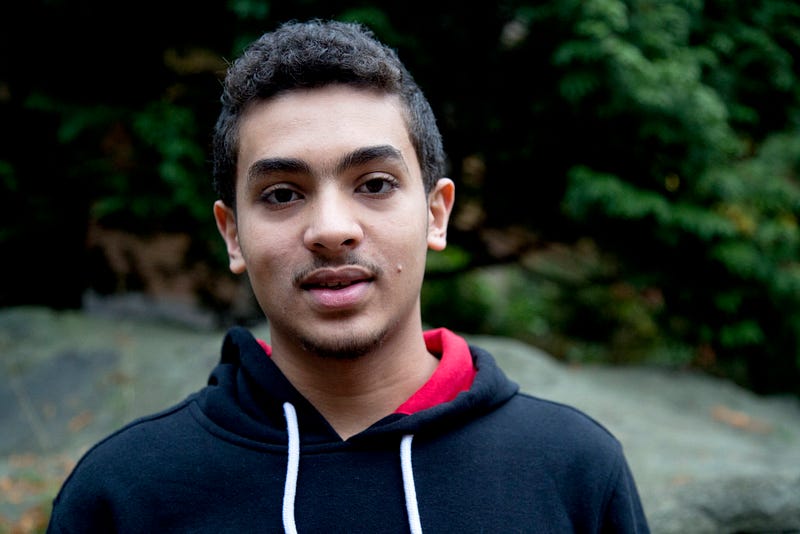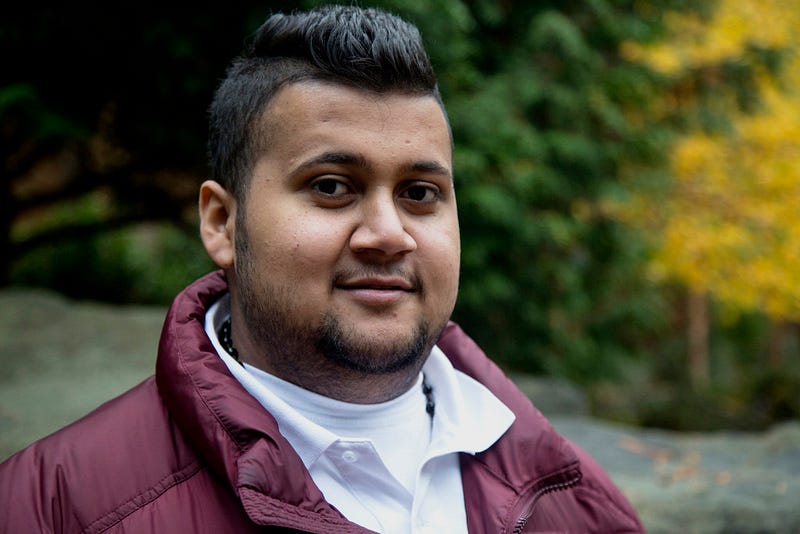بعيدا عن الوطن (Far From Home)
Saudi Students Navigate a New Country and Culture
STORY AND PHOTOS BY STEPHANIE VILLIERS
The bus comes to a stop a few blocks from Western’s campus, opening its doors to pick up students heading to class. The chatter filling the vehicle is predominantly in English until a few Arabic words enter the lexicon as Fahad Mukhtar steps on the bus with his friends from Saudi Arabia. The group of men are all international students at Western in various stages of learning English, so as they take their seats they mostly speak in their native language with one another.
One of Mukhtar’s friends sits next to an American woman and strikes up a conversation with her, wanting to practice his English skills. She asks him where he’s from, and he tells her he calls Saudi Arabia home.
“It must be dangerous to live in Saudi Arabia,” the woman remarks.
While listening in on this conversation, Mukhtar is taken aback by her statement, but this misconception by Americans about his home country is something he has grown familiar with during his two years of studying in the United States. Before getting off the bus, Mukhtar’s friend insists that Saudi Arabia is not dangerous, though it’s unclear if the woman is convinced of that or not.
Different Culture, Different Customs
Mahmoud al-Saif felt like he already visited Western when he first arrived in Bellingham from his hometown of Qatif in eastern Saudi Arabia. In a way, he had, via the Internet. When he first decided where he wanted to study in IEP, he used the street view setting on Google Maps to virtually explore campus and the surrounding roads in town.
Since he was able to navigate the area without getting lost, this made his transition to the U.S. a little smoother than he expected. He was able to show his sister, Fatimah al-Saif, around when she arrived at Western to study in IEP two years later. However, both of the siblings quickly had to learn to adapt to cultural differences they encountered in the U.S., especially regarding interactions between men and women.
“For my first quarter in IEP, it was hard for me to adapt to being with mixed classmates,” Fatimah al-Saif says. “In Saudi Arabia, we don’t have mixed classes. Girls have different schools than boys, and they have only female teachers. I studied for 12 years in this system.”
Fatimah al-Saif is in the Bridge Program at Western, which is for students who are in their first quarter of classes as international students after graduating from the IEP sequence. Every weekday morning, she wakes up, gets dressed and prepares herself for a long day of sitting through classes and tackling homework.
Like some Muslim women, she wears a hijab that veils her hair as prescribed by modesty standards in the Quran. She says she does this to ensure her head and body are covered from men who are not close relatives. She also declines to have her photo taken to dissuade males from viewing her specific features. She adds that Muslim women interpret the concept of hijab differently and do not all follow the same practices.

Fatimah al-Saif smiles and laughs often when discussing her experiences in the U.S., having now lived here for almost two years since arriving in December 2013. She says she is an inherently social and outgoing person, but sometimes runs into difficulties when meeting and interacting with people who are unfamiliar with her customs and culture.
“When I meet other people from different cultures, especially the United States, they don’t know a lot about what they should do when they meet me. For example, in greeting, I don’t shake hands with males,” she says, adding that in Saudi culture opposite genders refrain from doing so with each other.
Mahmoud al-Saif, who is more quiet and reserved than his sister, says he also encounters this same predicament when greeting people. For him, an awkward dilemma occurs when one of his female professors extends her hand to him.
“Shaking hands with the opposite sex is prohibited in Islam and I always fall in these embarrassing situations where I have to shake hands with females, just to make them not feel embarrassed, especially in front of other people,” he says. “I’ve encountered that so many times and I really want American people to understand it because it’s important.”
Praying and Practicing Religion
Some practicing Muslims follow dietary restrictions prescribed by the Quran. Food they eat must be certified halal, an Arabic word meaning lawful or permissible. Halal food refers to poultry and meat that is slaughtered according to Islamic practices. Seafood is permissible, but pork, blood and alcoholic beverages are not, according to the Quran.
Due to these restrictions, Fatimah and Mahmoud al-Saif cook their meals together and rarely go out to eat. The siblings order halal meat from companies around the U.S. and have it shipped to their apartment.
“When I first came here, I spent six months eating only salmon, pizza and vegetarian things because there was no way for me to find halal meat,” Mahmoud al-Saif says. “After we found those companies that we’re dealing with now for halal meat, we started learning how to cook the traditional dishes we usually make at home. We do sometimes make Chinese food, or Indian. As long as we are using halal meat, it is ok for us to make anything.”
According to Mahmoud al-Saif, religion and culture in Saudi Arabia cannot be separated, and Islam intertwines with all aspects of life. He and his sister still are able to practice their religion while living here but sometimes need to be creative with their practices.
Once, while traveling in the U.S., the al-Saif siblings had to pray in an airport in front of many other travelers. Muslims pray five times a day and face the direction of Mecca, Saudi Arabia, while doing so. In addition to reciting prayers and Islamic verses, Muslims bow, kneel and touch their foreheads to the ground while praying.

As Mahmoud prayed in the middle of the airport terminal, he could feel the eyes of passersby peering at his ritualistic movements that must have appeared out of sorts in a place where authorities are often on the lookout for suspicious behavior. He knew that people were puzzled by the actions of him and his sister, but they continued with their prayers nonetheless. He says they have had to pray in public more than once, such as when they are on campus.
“Sometimes, I think, I can see how people look at us while we’re praying and they feel like that’s a strange thing. They have never seen people who do that before,” Mahmoud al-Saif says. “I would understand how strange it looks from the outside, but I also haven’t encountered anytime in our experience where I have been disturbed.”
Misconceptions
Money, camels, oil.
That’s what Mukhtar says Americans think of when he tells them he’s from Saudi Arabia. Contrary to those perceptions, not all Saudis are wealthy. Fatimah al-Saif says she’s encountered a similar reaction from people who learn she’s from a major oil-producing country.
“When I tell someone I am from Saudi Arabia, the person always says, ‘Oh, rich country.’ I’m not a rich person!” she exclaims while laughing, adding that people should not stereotype Saudis.
Saudi international students at Western usually travel back home during the summer and winter breaks, so they spend a fair amount of time in the Seattle-Tacoma International Airport waiting to catch 20-hour flights. During one school break, Anas al-Sabri was standing in the security line at SeaTac, passport in hand and preparing for the long trip ahead of him.
An airport security official marched over to him and asked to see his passport. Al-Sabri handed him the green booklet embellished with Arabic script, and the official flipped through its pages. He then told al-Sabri to step out of the line and follow him to the front of the security area where the official closely examined his passport. He eventually let him continue through security to his flight, but the experienced left al-Sabri feeling embarrassed and singled out.
“I would like people to know that people from Saudi Arabia aren’t that dangerous,” he says. “Here in the United States, there are dangerous people but we don’t think that all Americans are dangerous.”
Al-Sabri says Americans’ misconceptions of Saudi Arabia stem from the events of Sept. 11 and the portrayal of Muslims in the media.
Mahmoud al-Saif echoes al-Sabri’s thoughts, saying that Muslims and those from the Middle East are often grouped together and portrayed in a certain way by the media that is far from the truth.
“There is a correlation that some Americans tend to do where they make connections between terrorism and Islam and I would say that’s really a misunderstanding,” he says. “The picture of Islam is distorted by those tiny groups of extremists who usually have political goals and they use the name of the religion to reach them. I would say that they are far, far away from Islam and the message of Islam in what they’re doing and how they’re doing it.”
Mahmoud al-Saif says he encourages Americans to not judge other cultures by how the media portrays them and to search beyond common misconceptions to learn about individuals of different backgrounds and belief systems. After living in the U.S., he says he has realized he cannot judge Americans by his own misconceptions either.
